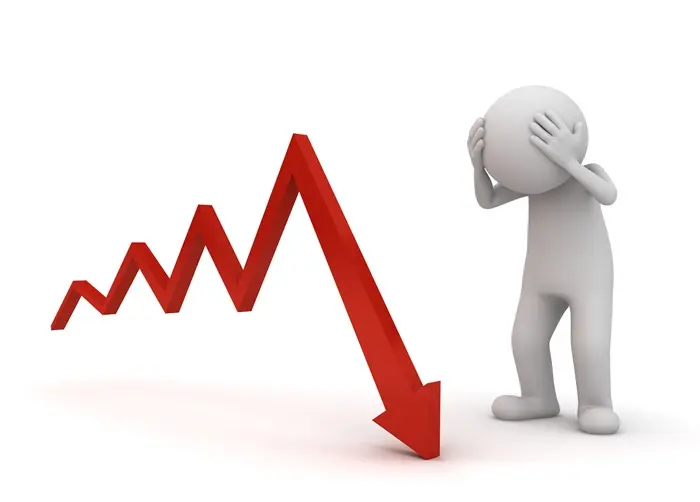Investing in stocks is one of the most popular ways to build wealth over time. Stock markets have historically provided higher returns than most other asset classes, such as bonds, real estate, or cash savings. However, one of the most common questions that new investors ask is: how much money should I invest in stocks? The answer is not straightforward, as it depends on several factors, including your financial goals, risk tolerance, time horizon, and current financial situation. In this article, we will explore the key considerations to help you decide how much money you should invest in stocks.
Understanding Stock Market Investments
What Are Stocks?
Stocks represent ownership in a company. When you buy shares of stock, you are essentially purchasing a small piece of that company. Stockholders may benefit from price appreciation (an increase in the stock’s value) and dividends (payments made by the company to its shareholders).
The stock market provides an opportunity to buy and sell shares of publicly traded companies. While investing in stocks can yield significant returns, it also involves risks, as the value of stocks can fluctuate.
The Power of Compounding
One of the main reasons that people invest in stocks is the potential for long-term growth, which is often driven by the power of compounding. When you reinvest your earnings (such as dividends or capital gains), you can generate more income from those reinvested earnings. Over time, this compounding effect can significantly increase the value of your investment.
The Risk and Return Trade-off
The stock market has historically provided higher returns than other investments like bonds or savings accounts. However, these returns come with higher volatility, meaning the value of stocks can go up and down. It’s important to recognize that risk and reward are inherently linked: higher potential returns typically come with higher risks.
Key Factors to Consider When Deciding How Much to Invest
1. Financial Goals
Your financial goals will play a key role in determining how much you should invest in stocks. Are you saving for retirement? Building an emergency fund? Or perhaps you’re saving for a down payment on a house? Each goal will require different strategies and different amounts of money to invest.
Short-Term Goals: If you’re investing for a short-term goal (like a vacation or purchasing a car), stocks may not be the best choice for all of your money because of their volatility. For short-term goals, it may be more appropriate to invest in safer assets, like bonds or savings accounts, which offer more stability.
Long-Term Goals: If you’re investing for long-term goals (like retirement or building generational wealth), stocks are generally a good option because they have the potential to grow over time. The longer your time horizon, the more risk you can afford to take.
2. Risk Tolerance
Your risk tolerance is a key factor in determining how much to invest in stocks. Risk tolerance refers to the amount of risk you are willing to take with your investments. Different investors have different levels of comfort with risk. Some people are comfortable with high-risk, high-reward investments, while others prefer safer, more conservative approaches.
Here are some general guidelines for understanding risk tolerance:
High Risk Tolerance: If you are comfortable with market fluctuations and can afford to ride out periods of volatility, you might allocate a larger portion of your portfolio to stocks.
Moderate Risk Tolerance: If you’re willing to take on some risk but prefer stability, a balanced portfolio with both stocks and bonds may be more suitable for you.
Low Risk Tolerance: If you are uncomfortable with market downturns and prefer stability, you may want to limit your stock investments and focus on safer assets, such as bonds or cash equivalents.
3. Time Horizon
Your investment time horizon—the amount of time you expect to hold your investments before needing to access the funds—will also affect how much you should invest in stocks. The longer your time horizon, the more risk you can afford to take, since you have time to recover from any market downturns.
Short Time Horizon (1-5 years): If you need access to your funds in the near future, stocks may not be the best place for your money, as short-term market fluctuations could impact your investments. Consider safer, more liquid assets like bonds or savings accounts.
Long Time Horizon (10+ years): If you’re investing for the long term, stocks are generally an excellent option, as they have historically outperformed other asset classes over long periods. With a long time horizon, you can afford to ride out market volatility.
4. Current Financial Situation
Before deciding how much to invest in stocks, it’s essential to evaluate your current financial situation. Do you have an emergency fund? Are you paying off high-interest debt? Are you contributing to retirement accounts like a 401(k) or IRA? These financial factors will impact your ability to invest in the stock market.
Emergency Fund: Before investing in stocks, it’s generally a good idea to have an emergency fund that covers 3-6 months of living expenses. This ensures that you have cash available if unexpected expenses arise and reduces the need to sell stocks during a market downturn.
High-Interest Debt: If you have high-interest debt (like credit card debt), it may be wiser to pay that off before investing in stocks. The interest you’re paying on debt could outweigh the potential returns from stock investments.
Retirement Accounts: Contributing to retirement accounts like a 401(k) or IRA is an excellent way to invest for the future while also benefiting from tax advantages. Consider allocating part of your savings toward retirement accounts before investing in individual stocks.
5. Diversification
Diversification is a crucial principle in investing. It involves spreading your investments across different asset classes, sectors, and regions to reduce risk. By diversifying, you can potentially protect yourself from significant losses if one stock or sector underperforms.
When deciding how much to invest in stocks, think about the overall composition of your investment portfolio. You don’t want to put all of your money in one stock or one sector. A well-diversified portfolio might include stocks, bonds, real estate, and cash. You can diversify within stocks by investing in various sectors, such as technology, healthcare, and energy, or through exchange-traded funds (ETFs) that provide exposure to a broad range of companies.
6. Dollar-Cost Averaging
Dollar-cost averaging (DCA) is a strategy where you invest a fixed amount of money in stocks on a regular basis, regardless of the stock’s price. This helps reduce the risk of investing a large lump sum of money at the wrong time, such as right before a market downturn. DCA can be especially helpful for new investors, as it encourages consistent investing and smooths out the impact of short-term market volatility.
7. Investment Strategy and Risk Profile
The amount you decide to invest in stocks also depends on your personal investment strategy and risk profile. Different strategies might require different levels of commitment to the stock market. Common strategies include:
Growth Investing: This strategy focuses on investing in companies with high growth potential. If you’re using this strategy, you may be willing to invest a larger portion of your portfolio in stocks.
Value Investing: This strategy involves buying undervalued stocks that are trading for less than their intrinsic value. Value investors may be more cautious with stock allocations.
Income Investing: If you focus on generating passive income, you might invest in dividend-paying stocks. This can be a way to reduce reliance on growth stocks and still benefit from market returns.
How Much Should You Invest?
There is no “one-size-fits-all” answer to this question. The amount you should invest in stocks depends on your unique circumstances. However, here are some general guidelines to help you decide:
1. Invest What You Can Afford to Lose
Stocks carry risk, and it’s important to only invest money that you can afford to lose. This is especially true for new investors who are still learning the ropes of the stock market. Start small and gradually increase your investments as you gain more experience and confidence.
2. Consider 10-20% of Your Portfolio in Stocks (for Conservative Investors)
For more conservative investors who are just starting out, it may be a good idea to limit stock investments to around 10-20% of your overall portfolio. This allows you to have exposure to the stock market while still maintaining a safety net through bonds and other lower-risk investments.
3. Consider 60-80% of Your Portfolio in Stocks (for Aggressive Investors)
Aggressive investors with a long-term horizon may allocate a larger portion of their portfolio to stocks. In some cases, investors with high risk tolerance may allocate 60-80% or more of their portfolio to stocks, depending on their financial goals and time horizon.
4. Start with Fractional Shares
If you’re just starting out and have limited capital, consider investing in fractional shares. Many brokerage platforms, including Cash App and Robinhood, allow investors to purchase partial shares of expensive stocks, making it easier to start investing with small amounts of money.
5. Build Gradually Over Time
The key to building wealth through stocks is consistent investing over time. Rather than trying to time the market or invest a large sum all at once, focus on making regular investments that align with your financial goals and risk tolerance. Over time, these contributions can add up and help you build a diversified portfolio.
Conclusion
Deciding how much money to invest in stocks depends on your financial goals, risk tolerance, time horizon, and current financial situation. There is no fixed amount that works for everyone, but by considering these factors, you can develop a personalized approach to stock investing that suits your needs.
Remember, investing in stocks carries both potential rewards and risks. Be sure to do your research, maintain a diversified portfolio, and stay focused on your long-term goals. Whether you’re a conservative or aggressive investor, building a solid investment strategy will help you navigate the ups and downs of the stock market and work toward achieving financial security.
Related topics:



























